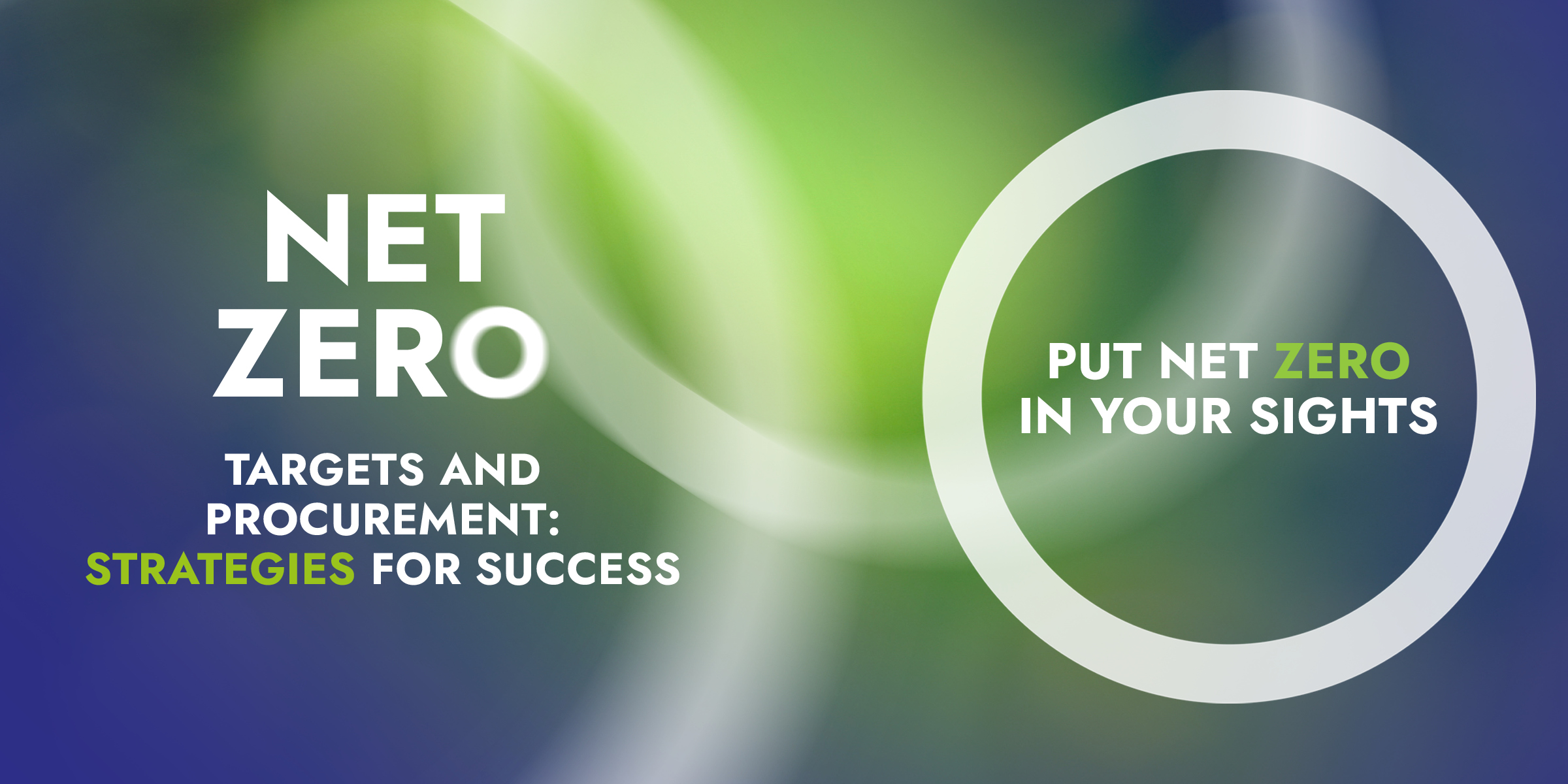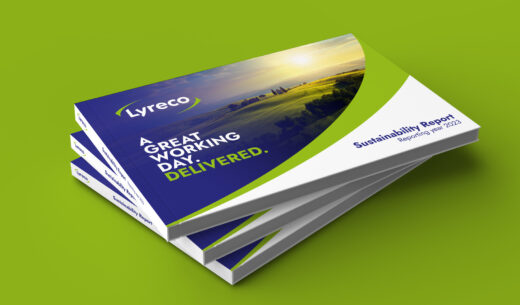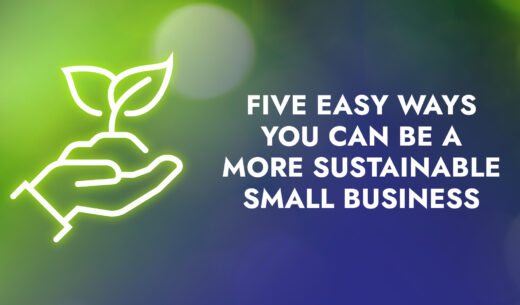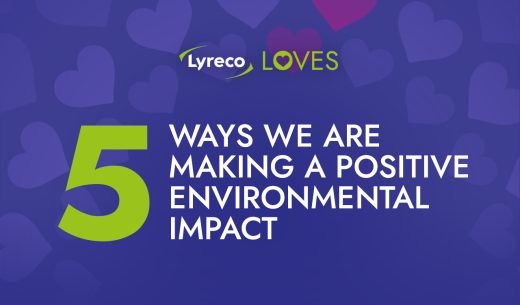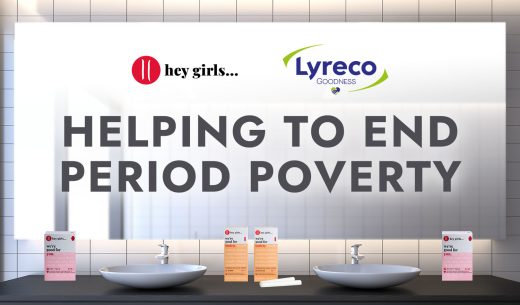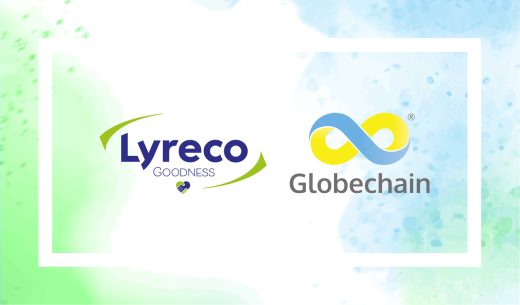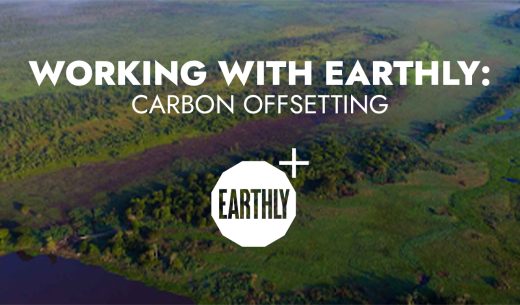Net zero targets and procurement: strategies for success
We explore the realities of reaching Net Zero in corporate procurement – and offer some advice on how to get there.
The target is 2050. Are we on track? Not even close. Despite the plans laid out in the Paris Agreement, the aim of reaching Net Zero by 2050 is looking unlikely, and drastic action is needed.
Even this aim is merely mitigation – if the 2050 target is realised, warming will ideally be limited to a controllable 1.5C. But a report from UN Climate Change suggested that, though the curve of greenhouse gas emissions is slowly trending downwards, it is not fast enough, and even the Paris Agreement “put the world on track for around 2.5 degrees Celsius of warming by the end of the century.”
It’s clear we’re past the point of discussion – action needs to be taken. Emissions of greenhouse gases are increasing year on year, and the supply chain accounts for roughly 50% of global emissions; often 90% of a company’s total.
It’s grim reading for anyone in the industry, but signifies that procurement professionals and CPOs are, therefore, in a uniquely influential position to enact change. Approaching the procurement process with Net Zero targets integral to any strategy is the only way to make significant changes.
What are the Net Zero targets in the UK?
The Paris Agreement in 2015 was a major step forward in tackling climate change – the UK was one of 196 countries to sign the legally binding agreement, alongside other significant polluters like the European Union, United States and China.
One of the key targets outlined in the treaty is emissions need to be reduced by 45 percent by 2030 and reach Net Zero by 2050. Together, the countries signed up to the treaty amount to 98 percent of anthropogenic emissions, making this the most important international agreement on climate change to date. Unfortunately, countries are only legally obliged to set nationally determined contributions, essentially targets, and re-evaluate them every five years, not actually reach Net Zero.
Net Zero, as a brief reminder, isn’t just about reducing emissions – it’s also about removing existing carbon in the atmosphere. Greenhouse gas emissions produced need to be equal to or less than the emissions removed from the environment. In the UK, national Net Zero targets go beyond the baseline laid out in the Paris Agreement. The UK was the first major economy to make a legally binding obligation to reach Net Zero, committing to end its contribution to global warming by 2050.
And it’s not just 2050 that has a legal obligation attached.
By 2035, greenhouse gas (GHG) emissions must be reduced from 1990 levels by 78 percent, which is a significant chunk of the total target – and we only have a decade to go.

A new target of 2030
In the UK, the not-legally-binding target from the Government is to reduce emissions by 68 percent by 2030. Many corporations, including the likes of BT, Vodafone and Sky Group, are rising to the challenge, making ambitious changes to their structure and placing huge strategic importance on Net Zero.
Of course, it’s not just UK companies that are picking up the pace in pursuing Net Zero. One of the largest corporations in the world has thrown down the gauntlet, promising to not only be carbon neutral by 2030, but carbon negative. Microsoft president Brad Smith made the company’s bold stance clear; “While the world will need to reach net zero, those of us who can afford to move faster and go further should do so”.
Emissions need to almost halve by 2030 if we plan on limiting global warming and avoiding catastrophic fallout. An assessment from the Intergovernmental Panel on Climate Change (IPCC), found that “limiting warming to around 1.5C (2.7F) requires global greenhouse gas emissions to peak before 2025 at the latest, and be reduced by 43 percent by 2030”. Any later and the damage will already be done.
IS IT POSSIBLE FOR CORPORATE PROCUREMENT TO
ACHIEVE NET ZERO?
We know it needs to be done, but is Net Zero for corporate procurement really possible? Tackling the convoluted world of corporate supply markets and changing long-held procurement policies is no easy feat. It’s no surprise that some claim Net Zero is an impossible target, doomed to fail.
But while big changes will be needed, there is reason to be hopeful. Many large corporations are already leading the way, leaving a roadmap for others to follow, while industries that face immense challenges in reaching Net Zero, like the energy sector, are making excellent progress.
There are challenges involved, of course – not least the lack of visibility in the supply market and lack of data – but these are issues the right procurement strategy can work to address. Technological evolution and demands from new legislation will also increase transparency in the supply chain, making it easier to identify and find solutions to poor environmental performance from suppliers.
And while Scope 3 emissions will inevitably be the focus where procurement is concerned, before looking out, it’s easier to look within – Scope 1 and 2 emission reductions are easier to progress. A few ‘quick-wins’ in achieving Net Zero emissions are;
- Purchasing electricity from renewable sources
- Switching to energy-efficient technologies, like LED lighting
- Use of electric vehicles or ultra-low emission vehicles
Carbon removal is another avenue to explore in pursuit of Net Zero; carbon offset companies can help your company meet their targets, taking some of the burden off procurement professionals.
Corporate procurement and Net Zero:
Strategies for success
A successful procurement strategy needs to address the company’s needs, while also being cost-effective and efficient.
Looking at total cost in the procurement process is where Net Zero comes in. Being cost-effective should be more than just a financial assessment; sustainability and social value must also be considered.
We look at a few strategies you can consider to achieve your Net Zero targets.
Learning from public procurement strategy
The Government issues the targets and passes the legislation – it’s only right that they should lead by example.
Public procurement is subject to its own rules and red tape, and faces some challenges that private procurement does not. Corporate procurement strategies are never going to be identical to those in the public sector, but that doesn’t mean there aren’t valuable lessons to learn from the public procurement strategy framework.
The way the Government uses its influence to drive innovation in sustainability, for instance, is something that could be used in the corporate procurement process. To win major government contracts, businesses must commit to Net Zero; the new Public Sector Procurement Bill‘s emphasis on social value encourages professionals to make sustainability credentials a priority when choosing suppliers.

Making Net Zero and sustainability a non-negotiable indirectly forces the hand of suppliers and contractors; if they want to win valuable contracts, they need to begin their sustainability journey and actively move towards Net Zero. Incentivising suppliers this way may not be an option for SMBs, but for corporate procurement, it’s a valid strategy.
You can also encourage existing suppliers to go green by simply supporting them through the process. Government bodies have created several guides and roadmaps on how to become more sustainable; you can do something similar with your suppliers, issuing how-to guides and advice on legislation. This is particularly useful for smaller suppliers, who may need more resources to unpack complex legal agreements.
Follow the example of other countries
(and companies)
The UK may be an island, but few companies are. Working with other countries – and being beholden to their rules and regulations – is part and parcel for most large corporations. Learning to adapt to stringent legislation can push your own Net Zero procurement strategy to the next level.
Sweden and Germany, for example, have established even more ambitious emissions targets than the UK. The Germany Supply Chain Act came into effect in January of 2023, and included strict requirements to do due diligence on the environmental impacts of suppliers.
But while learning from other countries is useful, there are few better ways for a large corporation to enact change than to follow the path laid out by other companies. Seeing companies that face similar challenges find great success in their sustainability journey is inspiring, and offers a roadmap to creating a Net Zero procurement strategy.
As mentioned earlier, there are several companies leading the way to Net Zero emissions, and procurement strategy is a significant part of that. Besides Microsoft, which will be carbon negative by 2030, there are companies in every industry actively working to reduce global emissions.
Even companies in historically polluting industries like car manufacturing are making bold commitments to change; Ford is looking to achieve carbon neutrality by 2050. Siemens AG aims to be the “world’s first major industrial company to achieve a net-zero carbon footprint by 2030”.
Rather than closely guarding their sustainability secrets, companies are working together to reduce their environmental impact. There are several roadmaps available online; following advice from a company similar to your own, and looking for a relevant procurement strategy can provide you with some actionable insights.
Set realistic objectives
It may seem obvious, but companies with Net Zero targets are much quicker to cut emissions than those without them. Just having a target to aim for is a great motivator.
Achievable targets are even more likely to motivate the procurement team. You should set out short-term, mid-term and long-term targets for your sustainability journey. A long-term procurement strategy is, of course, necessary, but hitting short-term goals shows progress, and makes the road to Net Zero feel more attainable.
Lofty objectives with no actions outlined on how to achieve them are unlikely to be met. Issue a strategy statement that considers immediate goals as well as over-arching ambitions for best results.
Mapping your supply chain
As discussed, indirect emissions are referred to as Scope 3 emissions; the majority of which come from the supply chain. Scope 3 can account for as much as 11 times the amount of a company’s direct, or Scope 1 and 2, emissions.
The first step in reducing your Scope 3 emissions is knowing where they’re coming from. Mapping out the supply chain and identifying where change is needed is an undeniably huge task, but a vital one.
A digitalised system makes this process much easier, but communication is still incredibly important. Good relationships with suppliers makes it easier to discuss climate change, discover where work may be subcontracted to, and request data.
Corporate supplier management is on a different scale to that of smaller businesses. For SMBs, where there are fewer degrees of separation in the supply chain, the task of mapping out their suppliers is not so monumental. For corporations, procurement teams must have a thorough tactical plan; administrative tasks like recording the performance of suppliers are essential to strategic procurement.
Digitalisation and data
Technology is a huge ally when trying to make sense of a complex network of suppliers – mapping the supply chain and recording performance is near impossible without it. Eliminating manual data entry speeds up processes; wherever possible, implement procurement software that can make your life easier. Keep an eye on AI technology, which could help iron out any existing inefficiencies in your procurement strategy framework.
To achieve Net Zero, you will need eyes on the entire supply chain. Gathering environmental performance data from your suppliers, as well as monitoring and reporting on it effectively, demands a digitalised system.
Risk management and prioritisation
Simply mapping the supply chain and gathering the necessary data can feel like an endless task. But once that objective is achieved, what do you do next? Actually tackling the issues can seem overwhelming – where do you even begin?
It ultimately comes down to the targets you set; those short-term goals are particularly useful at this stage. Prioritisation is vital for getting your sustainability journey up and running; highlight the worst offenders for environmental performance and handle those issues first. Look at your current procurement process and see where the highest risk of poor performance could be.
Set out a tactical plan to address these high-risk suppliers – either educate them or switch to something more sustainable. Once the highest-priority suppliers are handled, you can move through the rest of the chain.
Education and training
Where education is concerned, internal analysis is just as important as reviewing suppliers. To implement an effective procurement strategy incorporating sustainability, the whole procurement team needs to be trained to identify, report and address any issues in the supply chain.
Education and training for your team are essential; a lack of technical knowledge hampers the whole project. Getting your staff up to speed on the latest processes and technology – namely, AI – will also help improve employee productivity more generally – a win-win for the procurement process with or without Net Zero aims attached.
After your team, education and training could be extended to suppliers. Use your influence to teach the importance of climate change and support suppliers through the process of going green; if you weigh their performance on their approach to sustainability, you will incentivise change.
Balancing cost and sustainability
In procurement strategy, there are few things that take priority over the bottom line. Cost reduction is undeniably key to procurement performance, and will always be one of the key factors of any purchasing strategy.

With rising inflation and the current economic climate proving a particularly challenging environment, you may wonder if now is the right time to pursue ambitious Net Zero plans. Besides the ticking clock of global warming, there are other reasons you shouldn’t wait to make changes.
Sustainable procurement may generally be the more expensive option at this stage, but this isn’t expected to last. As Net Zero products become more efficient, the sustainability premium will soon decline, and you will be ahead of the pack in meeting legislation and future-proofing the business.
Currently, Net Zero targets are expected to raise procurement costs by an initial 3%, and you will have to balance the budget with this in mind. Long-term, however, it is expected to be an economic boost. According to the World Economic Forum, Green Public Procurement will boost global GDP by US$6 trillion by 2050.
A robust procurement strategy in 2023 should incorporate both sustainability and cost savings – rather than seeing it as an extra expense, it should be viewed as a necessity.
Working with sustainable suppliers
Educating existing suppliers on sustainability is certainly a worthwhile endeavour – especially if no greener alternatives are available – but life for procurement professionals is made immeasurably easier if they don’t have to do this legwork.
Scope 3 emissions are the hardest to wrangle, and the procurement process is already complex enough without jumping through hoops to help suppliers switch. Working with suppliers that prioritise sustainability as part of their core ethos and inform you of the true cost of products makes strategic sourcing to reduce Net Zero emissions far simpler.
At Lyreco, sustainability is intrinsic to everything we do. And it’s not just our internal processes – we want to make sustainability easy for our customers as well. We provide companies with workplace supplies that they know won’t contribute to their Net Zero emissions.
Besides a fleet of e-vehicles, recycling services and sustainable packaging, we make sure the true cost of any products you buy is clear – without you having to search for it. We don’t want to add to the workload of procurement teams; we have a Green Button feature on our webshop that allows you to shop as normal, but be shown sustainable alternatives at checkout (with price comparisons for transparency, of course).
Lyreco is proud to be a sustainable supplier – we work with our customers to help them reach their Net Zero targets and could help your team progress on your sustainability journey.
Be ambitious with your Net Zero target
To reach Net Zero, emissions need to be reduced rapidly across the world. Your company should not be afraid to be ambitious in the targets it sets.
As we’ve discussed, it is more than possible – you have the opportunity to make a positive impact on the planet, perhaps more than most other professions. Bringing sustainability to the forefront of corporate procurement is no easy feat, but by implementing the changes discussed, you will quickly notice improvements.
Combining solutions, like reducing emissions produced alongside carbon dioxide removals, makes the task far more manageable. As does working with suppliers that already have Net Zero strategies in place, and will help you reduce your own Scope 3 emissions – like Lyreco. Find out more about what we can do for your company here.

